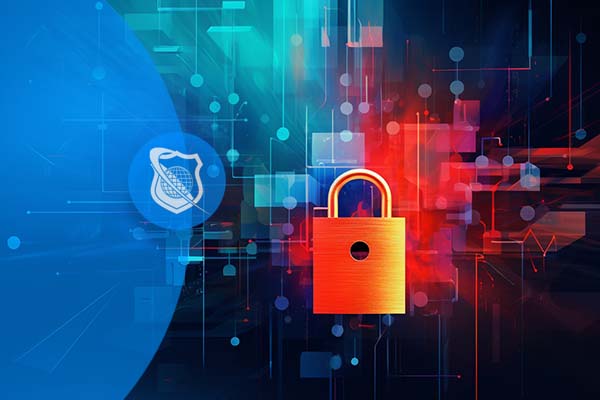Cybersecurity Technician: Top 10 Skills You Need to Succeed
Understanding the Role of a Cybersecurity Technician
A cybersecurity technician plays a vital role in safeguarding an organization’s digital assets by implementing and maintaining security measures against cyber threats. Their core responsibilities include monitoring networks for malicious activity, responding to security incidents, configuring security tools, and ensuring compliance with security policies. These professionals serve as the frontline defenders, working tirelessly to identify vulnerabilities and prevent breaches that could compromise sensitive data or disrupt business operations.
In today’s digital landscape, cybersecurity has become more critical than ever, driven by the increasing sophistication of cyberattacks and the proliferation of digital services. Cybersecurity technicians are integral to larger IT and security teams, collaborating closely with network administrators, security analysts, and management to develop robust security strategies. Their expertise helps organizations meet regulatory requirements, protect customer information, and maintain trust in their digital operations.
Key industries such as finance, healthcare, government, retail, and technology depend heavily on cybersecurity expertise. For example, financial institutions handle sensitive transaction data, making cybersecurity crucial for compliance and fraud prevention. Healthcare providers must protect patient records under regulations like HIPAA, while government agencies safeguard national security information. The demand for skilled cybersecurity technicians continues to grow, offering numerous career advancement and professional development opportunities, including specialized certifications, leadership roles, and niche expertise in areas like threat hunting or penetration testing.
Technical Skills and Knowledge
Proficiency in network security principles and protocols forms the foundation of a cybersecurity technician’s skill set. Understanding how networks operate, including TCP/IP, DNS, VPNs, and firewalls, enables technicians to identify and mitigate vulnerabilities effectively. Familiarity with common cybersecurity tools and software is equally essential. These tools include firewalls, intrusion detection and prevention systems (IDS/IPS), antivirus programs, and endpoint protection solutions that monitor and control network traffic.
Furthermore, a solid grasp of operating systems—particularly Windows, Linux, and Unix—is vital since each platform presents unique security features and vulnerabilities. Knowledge of encryption methods and cryptographic protocols ensures that sensitive data remains protected during transmission and storage. The ability to analyze and interpret security logs and alerts helps in early detection of malicious activity, while skills in vulnerability assessment and penetration testing enable technicians to proactively identify weaknesses before attackers do. Experience with Security Information and Event Management (SIEM) systems allows for centralized monitoring and advanced threat detection, streamlining incident response efforts.
Threat Detection and Incident Response
Recognizing signs of cybersecurity threats and breaches is a critical skill for any cybersecurity technician. This involves monitoring network traffic, system logs, and user behaviors to identify anomalies that may indicate malicious activity. Techniques such as anomaly detection, signature-based detection, and behavioral analytics are employed to spot potential threats early. Being vigilant enhances the organization’s ability to prevent incidents or respond swiftly when they occur.
Incident response planning and execution are at the heart of cybersecurity defense. When a security incident occurs, technicians follow established procedures to contain the threat, eradicate malicious elements, and recover normal operations. This process includes isolating affected systems, removing malware, and applying patches or updates. Proper documentation and reporting of security incidents ensure lessons are learned and future prevention measures are implemented. Post-incident analysis helps refine security strategies, making defenses more resilient against evolving threats.
Risk Management and Compliance
Understanding cybersecurity frameworks and standards such as NIST, ISO 27001, and CIS Controls provides a structured approach to managing information security risks. Conducting risk assessments and vulnerability scans helps identify areas needing improvement. Developing and enforcing security policies and procedures ensures consistent security practices across the organization. These policies cover password management, access controls, data encryption, and incident reporting, forming a comprehensive security posture.
Ensuring compliance with legal and regulatory requirements like GDPR, HIPAA, and PCI DSS is also fundamental. Non-compliance can lead to hefty fines and reputational damage. Implementing data protection and privacy measures, including data masking, encryption, and access restrictions, helps organizations meet these obligations while safeguarding customer and employee information. A cybersecurity technician must stay current on evolving regulations to maintain compliance and minimize legal risks.
Soft Skills Essential for Success
While technical prowess is essential, soft skills significantly influence a cybersecurity technician’s effectiveness. Critical thinking and problem-solving abilities enable technicians to analyze complex security issues and devise effective solutions quickly. Effective communication skills are necessary to explain technical findings to non-technical stakeholders, ensuring that security concerns are understood and appropriately addressed.
Attention to detail and thoroughness are crucial during audits, investigations, and incident analyses. The rapidly evolving nature of cyber threats demands adaptability and a proactive mindset. Teamwork and collaboration within multidisciplinary teams lead to more comprehensive security strategies, while the ability to prioritize and manage multiple tasks under pressure ensures that critical issues are addressed promptly without overlooking important details.
Continuous Learning and Certification
Staying current with emerging threats, new attack techniques, and evolving technologies is vital in the cybersecurity field. The landscape shifts rapidly, requiring professionals to engage in continuous education to remain effective. Industry certifications such as CompTIA Security+, Certified Ethical Hacker (CEH), CISSP, and GIAC certifications validate skills, enhance credibility, and open doors to advanced roles.
Resources for ongoing learning include online courses, webinars, industry conferences, and cybersecurity communities. Developing a proactive learning mindset helps technicians anticipate future security challenges rather than merely reacting to incidents. Building a personal brand and professional network within the cybersecurity community provides valuable opportunities for mentorship, knowledge sharing, and career advancement.
Practical Experience and Hands-On Skills
Real-world experience is indispensable for becoming a proficient cybersecurity technician. Internships, lab exercises, and simulated environments help translate theoretical knowledge into practical skills. Participating in Capture The Flag (CTF) competitions and cybersecurity challenges sharpens problem-solving abilities and exposes technicians to real attack scenarios.
Setting up home labs to practice security configurations and attack techniques allows technicians to experiment safely. Contributing to open-source security projects or volunteering for community initiatives enhances skills and visibility. Mentorship and peer learning foster continuous improvement, offering insights into best practices and emerging trends in cybersecurity.
Ethical and Legal Considerations
Maintaining integrity and confidentiality is paramount in cybersecurity work. Professionals must understand laws related to hacking, cybercrime, and data breaches, ensuring their actions are ethical and lawful. Ethical hacking practices, including responsible disclosure of vulnerabilities, are essential to improve security without causing harm.
Privacy considerations must be at the forefront of cybersecurity efforts, especially when handling sensitive data. Building trust with clients and stakeholders involves transparent communication, adhering to legal standards, and demonstrating a commitment to ethical conduct. Understanding the legal landscape helps technicians avoid inadvertent violations and reinforces the importance of responsible cybersecurity practices.
Conclusion
Becoming a successful cybersecurity technician requires a well-rounded skill set that balances technical expertise with soft skills and ethical awareness. Mastery of network security, threat detection, incident response, and risk management forms the technical backbone, while soft skills like communication, adaptability, and teamwork enhance overall effectiveness. Ongoing education, certifications, and practical experience are critical for staying ahead in this dynamic field.
Cybersecurity is a rewarding career dedicated to protecting digital assets, maintaining trust, and defending critical infrastructure. Aspiring professionals should embrace continuous learning and ethical practices to build a resilient and impactful career. By cultivating a diverse skill set and staying proactive in education, cybersecurity technicians can significantly contribute to a safer digital world and enjoy long-term professional growth.










